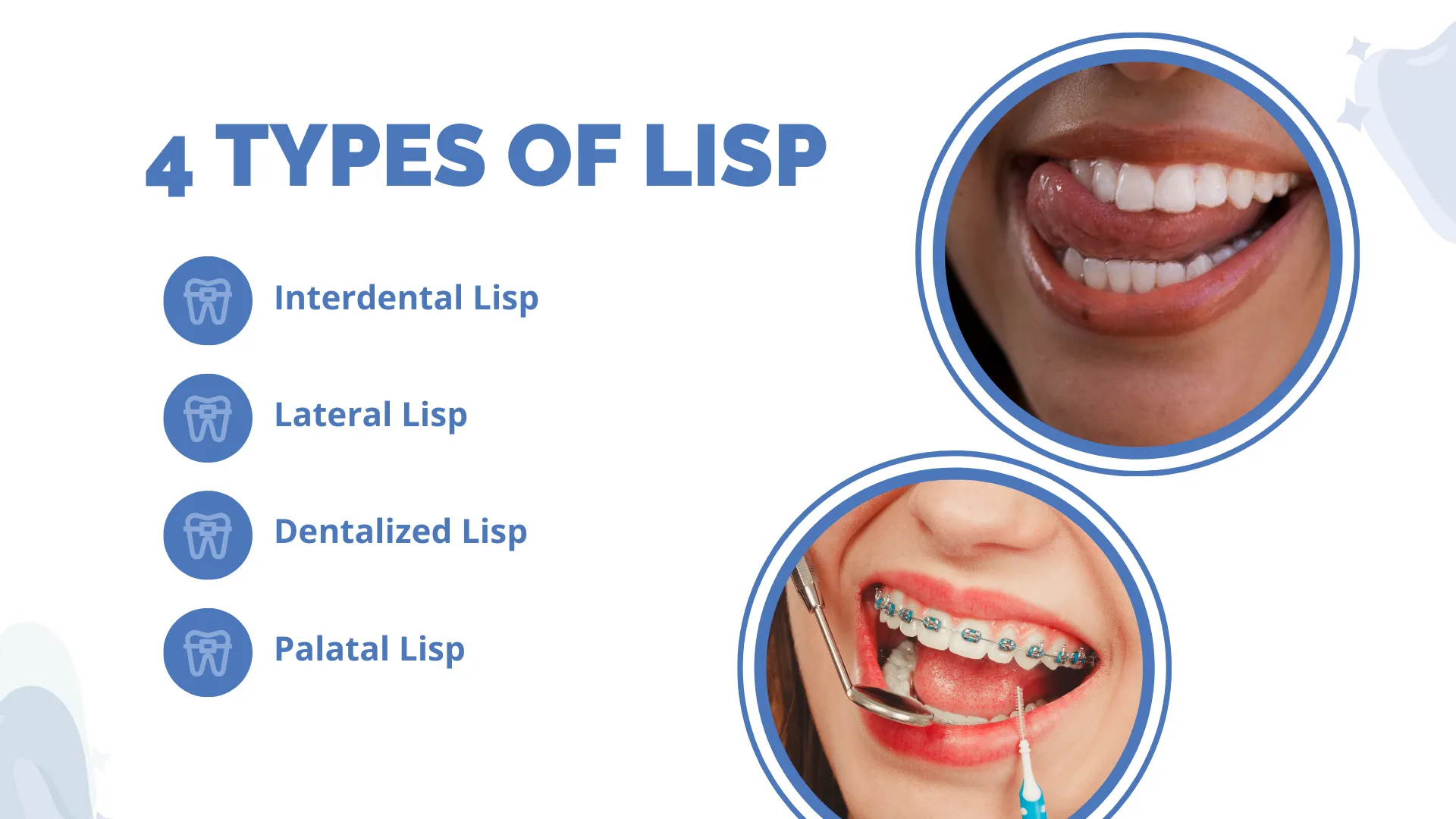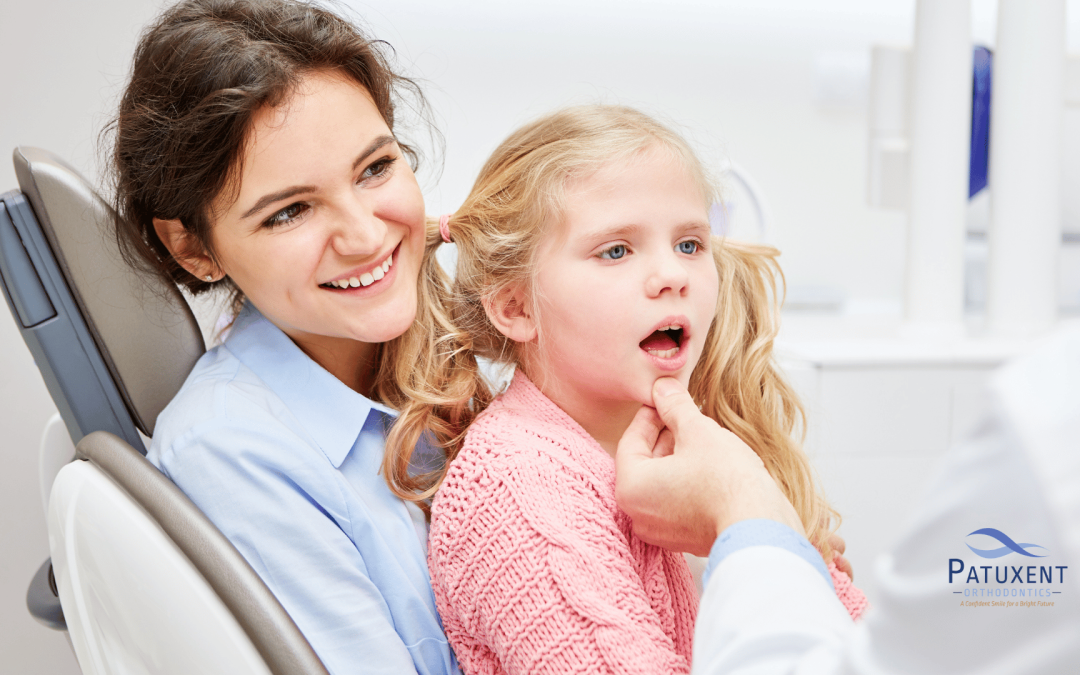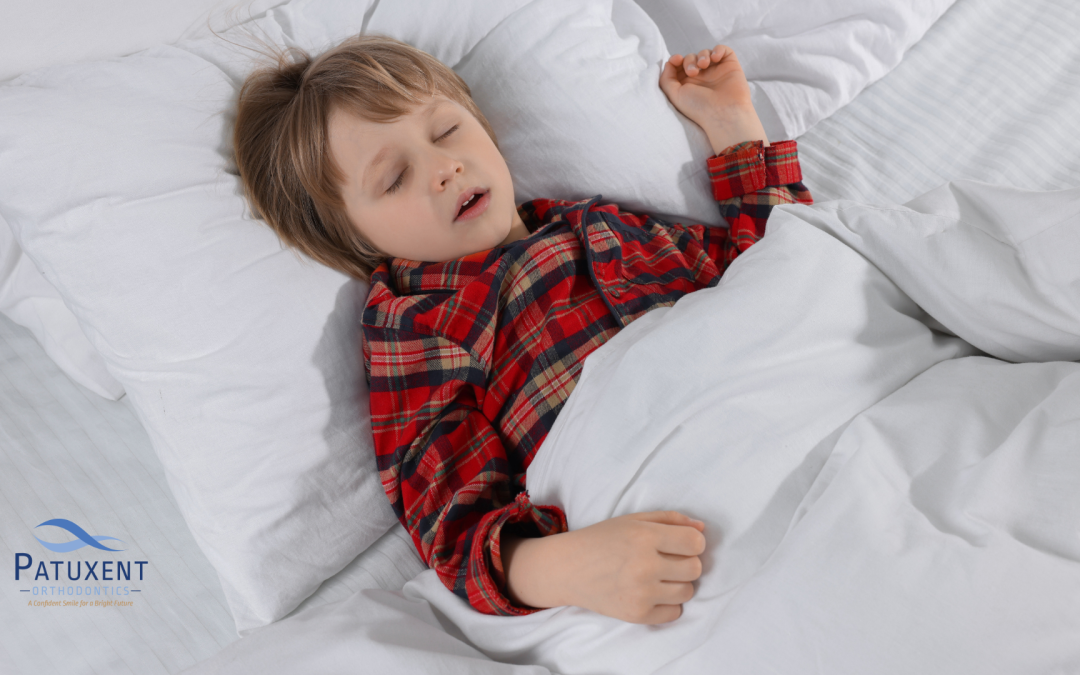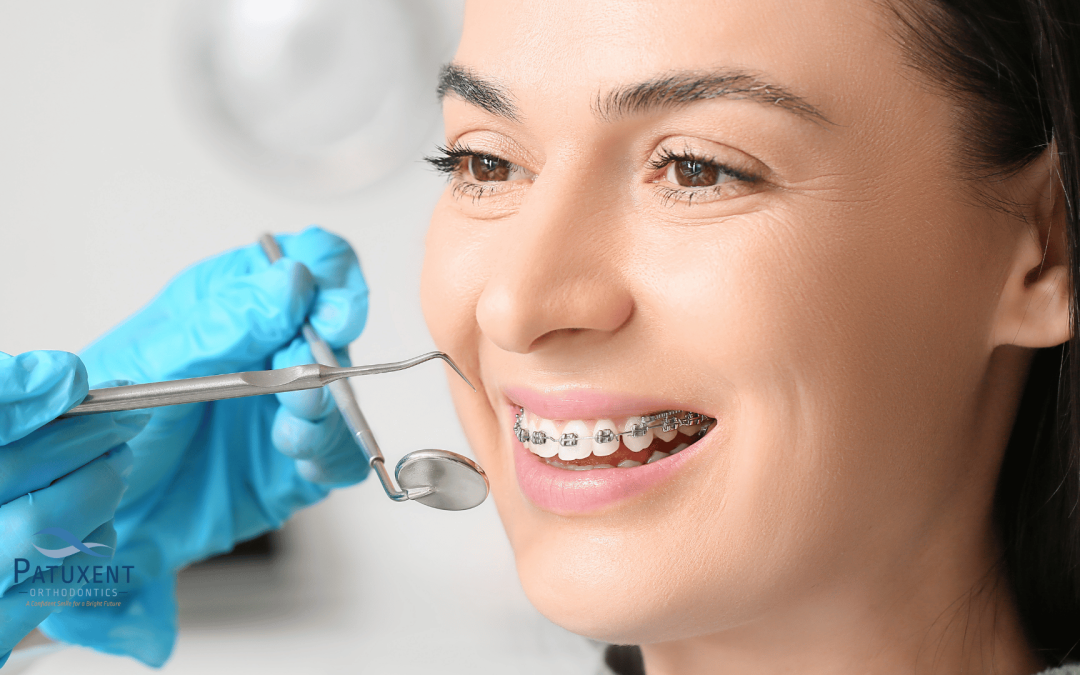The journey to a straighter smile is not always smooth sailing.
Sometimes, orthodontic patients experience a twist in the story: Braces may lead to speech problems, like a lisp!
It’s not uncommon to find speaking tricky during the initial adjustment period with braces.
Both your mouth and tongue need time to adjust to wires, brackets, and all the orthodontic paraphernalia.
However, during treatment, you may experience the opposite: Braces sometimes remedy a lisp in the long run!
While you might start with a speech hiccup, braces are your ticket to a better smile and clearer speech, too!

What Is a Lisp?
A lisp is a type of speech impairment that affects how a person pronounces particular sounds. It’s mainly noticeable when you utter the “s” or “z” sounds.
Instead of sounding clear, these sounds come out more like “th.” For instance, “simple” will sound like “thimple.”
This speech impediment occurs because the tongue doesn’t hit the right spot in the mouth when uttering these sounds. It either comes short of touching the roof of the mouth correctly or sticks out between the teeth.
Lisps are common in young kids as they learn to talk, although they may continue into adulthood.
Is Lisp a Speech Impediment or a Speech Disorder?
A common question we receive from our patients concerns the nature of lisps:
“Are they speech impediments or speech disorders?”
A speech impediment is a specific problem in uttering particular sounds correctly. It’s more about the challenge of physically producing a sound.
On the other hand, the term “speech disorder” covers a range of speech-related disorders.
Speech disorders affect the way language is used and understood. They include issues such as stuttering, voice hoarseness, tongue tie, and selective mutism.
A lisp fits more into the “speech impediment” category. But just like many speech disorders, it is often improved or even resolved through therapy. Speech therapists work on correcting the tongue’s position and improving sound production.
The 4 Types of Lisp

- Interdental Lisp: It occurs when the tongue sticks out between the front teeth while speaking. Imagine saying the word “sing,” only to hear the word “thing” instead!
- Lateral Lisp: When someone with a lateral lisp utters the “s” and “z” sounds, the air flows over the sides of the tongue instead of down the middle. As a result, the sound comes out wetter and slushier than it should.
- Dentalized Lisp: The tongue pushes against the front teeth, resulting in the same unclear speech of an interdental lisp.
- Palatal Lisp: The middle part of the tongue touches or comes too close to the palate. So, the “s” and “z” sounds appear distorted.
6 Causes behind Lisp

- Developmental Factors: Many children develop a lisp while learning to speak. But, with growth and speaking practice, they gradually outgrow this speech impediment. It’s a natural part of the speech development process.
- Tongue Placement: A tongue not in the right spot leads to slightly slurred speech.
- Anatomical Differences: Physical attributes like a tongue tie—where the tongue’s range of motion is restricted—or structural differences in the jaw and teeth contribute to a lisp.
- Neurological Issues: In rare cases, lisps are tied to neurological or developmental conditions affecting muscle control.
- Hearing Problems: Hearing issues, especially at a young age, affect how children learn to pronounce certain sounds.
- Habits: Thumb-sucking and extended pacifier use influence how the mouth and tongue develop.
Can Braces Cause a Lisp?
Traditional braces may bring a temporary yet unwanted surprise during the orthodontic treatment process: a lisp.
It’s not uncommon for dental braces to cause a speech hiccup.
The reason?
Your tongue has to figure out how to work around all those new additions to your mouth, like wires and brackets.
For a while, it may bump against them while trying to pronounce certain sounds, leading to a lisp.
Are Speech Impediments after Getting Braces Permanent?
Here’s some encouraging news: lisps rarely stick around for long!
As you become accustomed to your braces, your tongue learns how to move with them, allowing your speech to return to normal. It’s all part of the adjustment period.
If the lisp doesn’t resolve on its own, you’ll have to bring in a speech therapist. They have a few tricks up their sleeves to improve tongue placement and speech clarity!
Can Braces Correct a Lisp?
Do braces have more superpowers besides bringing crooked teeth back in line:
Correcting lisps!
By straightening your teeth, braces change the way your tongue hits your teeth when you talk. They give your tongue a new, better roadmap for making sounds.
Once their teeth are in the correct alignment, thanks to braces, many of our patients see their lisp improving or even fading away!
Can Invisalign Correct a Lisp?

Just like traditional braces, clear retainers work to align your teeth.
Misaligned teeth affect how your tongue hits them when uttering those tricky “s” and “z” sounds.
If your lisp is due to the position of your teeth, you will notice an improvement in your speech as Invisalign or SPARK aligners gradually move your teeth into the right place!
However, it’s not always a straight treatment path.
When you first start wearing clear aligners, you may develop a temporary lisp until your tongue gets used to these orthodontic devices. Because they add bulk to your teeth, your tongue needs time to figure out how to move around them.
But don’t worry—your tongue will quickly learn to work with the aligners instead of against them!
Say Goodbye to Your Lisp: How Time Smooths Out Speech!
Contact Patuxent Orthodontics if orthodontic care is the solution to your dental woes. Whether you want to learn more about the benefits of orthodontic care or have questions about the process, use our live chat, call (240) 802-7217, or message us through our Contact Us page to connect with our friendly staff today and book a complimentary consultation!
Our office, located at 44220 Airport View Dr., Hollywood, MD 20636, proudly serves Maryland’s Patuxent area, as well as the Greater Washington DC area. So, if you’re residing in Hollywood, Wildewood, or Leonardtown and are looking for one of the best orthodontists in Maryland, don’t hesitate to visit our office!
We also invite you to keep up with our blog to get answers to many of the frequently asked questions about maintaining your perfect smile, and follow us on Facebook and Instagram to become a part of our smiling community!
References
- “Can Braces Correct or Cause a Lisp?” Milnor Orthodontics, Milnor Orthodontics, www.milnororthodontics.com/blog/can-braces-correct-or-cause-a-lisp/. Accessed 23 Nov. 2023.
- “Can Braces Give You a Lisp? Yes, but Just Temporarily.” Braces Know How, bracesknowhow.com/can-braces-give-you-a-lisp/. Accessed 23 Nov. 2023.
- “Can Orthodontic Treatment Improve Speech Impediment? – Sacks Orthodontics.” Sacks Orthodontics (SO), sacksortho.com/orthodontics-speech-impediment/. Accessed 23 Nov. 2023.
- “Do Braces Affect Speech? [5 Facts] – Dr Gluck Knows…” Nashville Orthodontist TN, www.drgluck.com/do-braces-cause-difficulty-in-speech/. Accessed 23 Nov. 2023.
- “Do Braces Give You a Lisp? Fact or Fiction?” HotPinkBraces.Com, hotpinkbraces.com/do-braces-give-you-a-lisp/. Accessed 23 Nov. 2023.
- “Do Braces Give You a Lisp: Orthodontist.” Whites Dental, www.whitesdental.co.uk/do-braces-give-you-a-lisp-london/. Accessed 23 Nov. 2023.
- “Teeth Straightening, Crooked Speech: Lisp and Orthodontics – Dental Blog – Weybridge Orthodontics.” Dental Blog – Weybridge Orthodontics –, www.surreybraces.co.uk/blog/straight-teeth-crooked-speech-lisp-and-braces/. Accessed 23 Nov. 2023.











